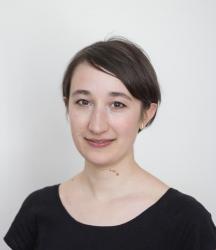
Recently, Iceland Airwaves made headlines in the New York Times for becoming the first music festival to completely close the gender gap between performers. We wanted to know more about this achievement and talked to Anna Ásthildur Þórsteinnsson—the festival’s online manager—about intersectionality, artist support and grassroot movements.
Keychange, an umbrella organisation advocating for gender equality at music festivals, wants to achieve a gender 50:50 balance by 2022 for participating music festivals and it’s supported by the British PRS for music foundation, which aims at developing new talents. “Iceland Airwaves is actually a founding member of the Keychange movement,” says Anna. “We’ve been part of this from the very beginning.” The movement is further supported by the Creative Europe programme of the European Union and other music festivals such as the Reeperbahn festival and Liverpool Sound City.

At the intersection
As a member of Keychange, Iceland Airwaves selected a few female artists and music industry professionals to support.
“The way it works is that these artists are booked by the other Keychange founding members’ festivals, and vice versa,” she explains. The artists chosen by Airwaves are dj. flugvél og geimskip, Kría, Hildur, and Milkywhale. For industry professionals, there are panels, seminars, workshops and discussions held to further their capabilities. For Anna, the 50:50 gender balance is part of a wider ongoing conversation for the future of festivals, where “the key is intersectionality.”
“The goal is really to create a network of people and strengthen the ties of the movement,” says Anna. “Airwaves is, of course, lucky because there is a seemingly endless supply of amazingly talented women in the indie and pop genre.”

Change is gonna come
Anna thinks it can be more difficult in genres such as metal, electronic music and jazz. “Starting a conversation on this topic is just really important,” she continues. “If festivals say that they don’t want to engage in the equality pledge conversation, it’s kinda revealing. Not all festivals are the same; a multi-genre showcase festival is very different from, say, a hard rock festival. But it’s great that everyone has an opinion on this, and if they’re not ready to pledge, they’re at least alerted to the change going on around them.”
On negative responses to the movement, Anna responds that there are always naysayers. “We’ve had a great, positive reaction so far,” she says. “You’re always afraid of a backlash if you’re the first and only one to do something like this.” For Anna, it’s hard to hear that festivals are afraid of not selling enough tickets with a female dominated lineup. “I just came back from Way Out West in Gothenburg, and I didn’t even think about it,” she says.

Girls rock
Meanwhile, Iceland Airwaves can not only boast about achieving an equal lineup—even the staff behind the scenes is comprised of precisely 50% women and 50% men. But the efforts of Airwaves are only one facet of the culture of supporting female musicians in Iceland.
“There’s the grassroot movement ‘Stelpur Rokkar,’ or ‘Girls Rock,’ which encourages girls to take up the guitar or drums and let their creativity flow,” Anna explains. “Björk is also a great role model as a female visionary and pioneer for girls and women,” she adds. Anna thinks Iceland is on a good path on this issue, as there’s an ever-increasing amount of female artists coming from Iceland. “In the end, it’s all about positivity and empowering great artists in finding their potential,” she finishes. “I hope we can inspire other places to follow suit and to facilitate positive change.”
Read more about Iceland Airwaves 2018 here, and look out for our 2018 Airwaves Special in mid-October.
Buy subscriptions, t-shirts and more from our shop right here!















